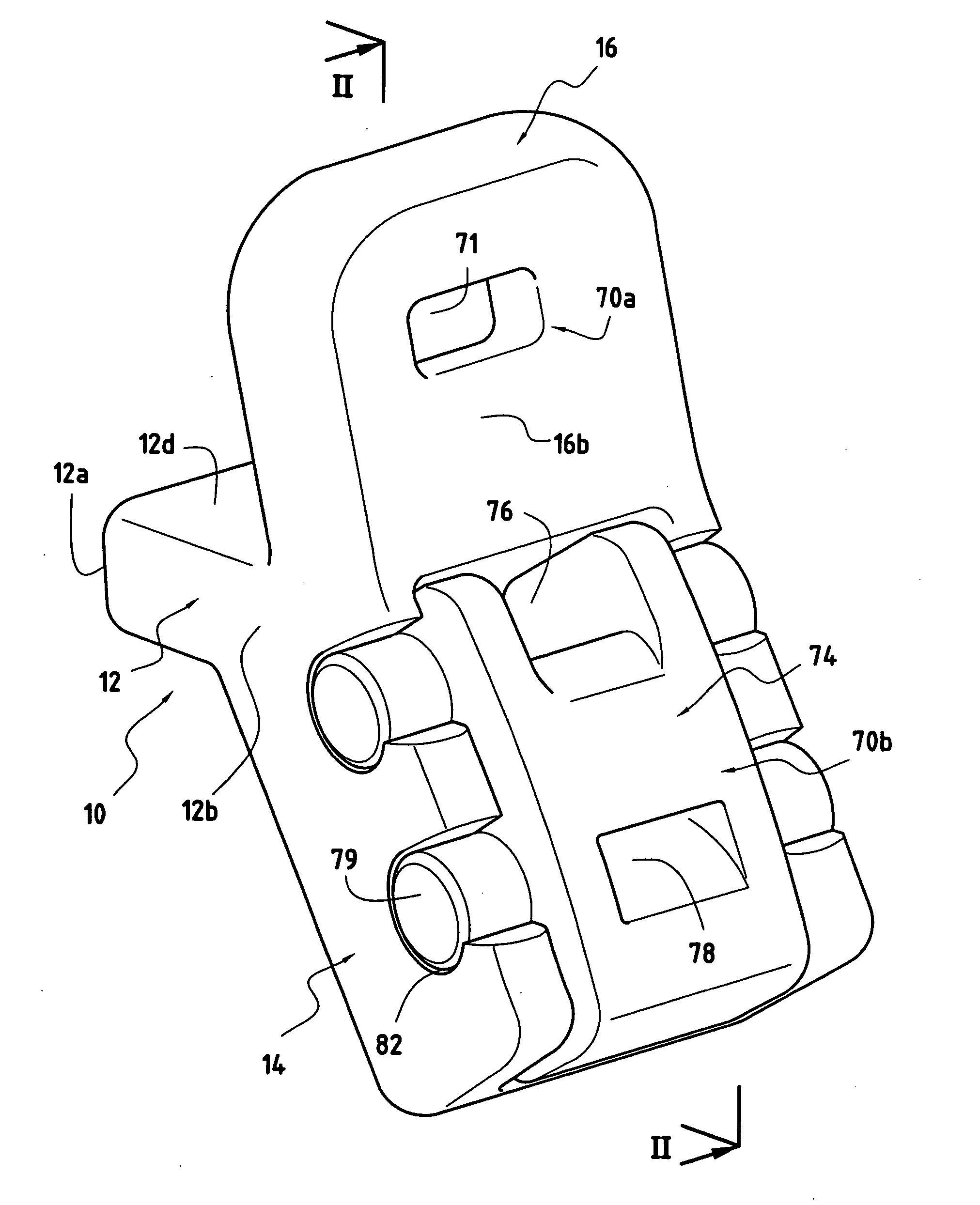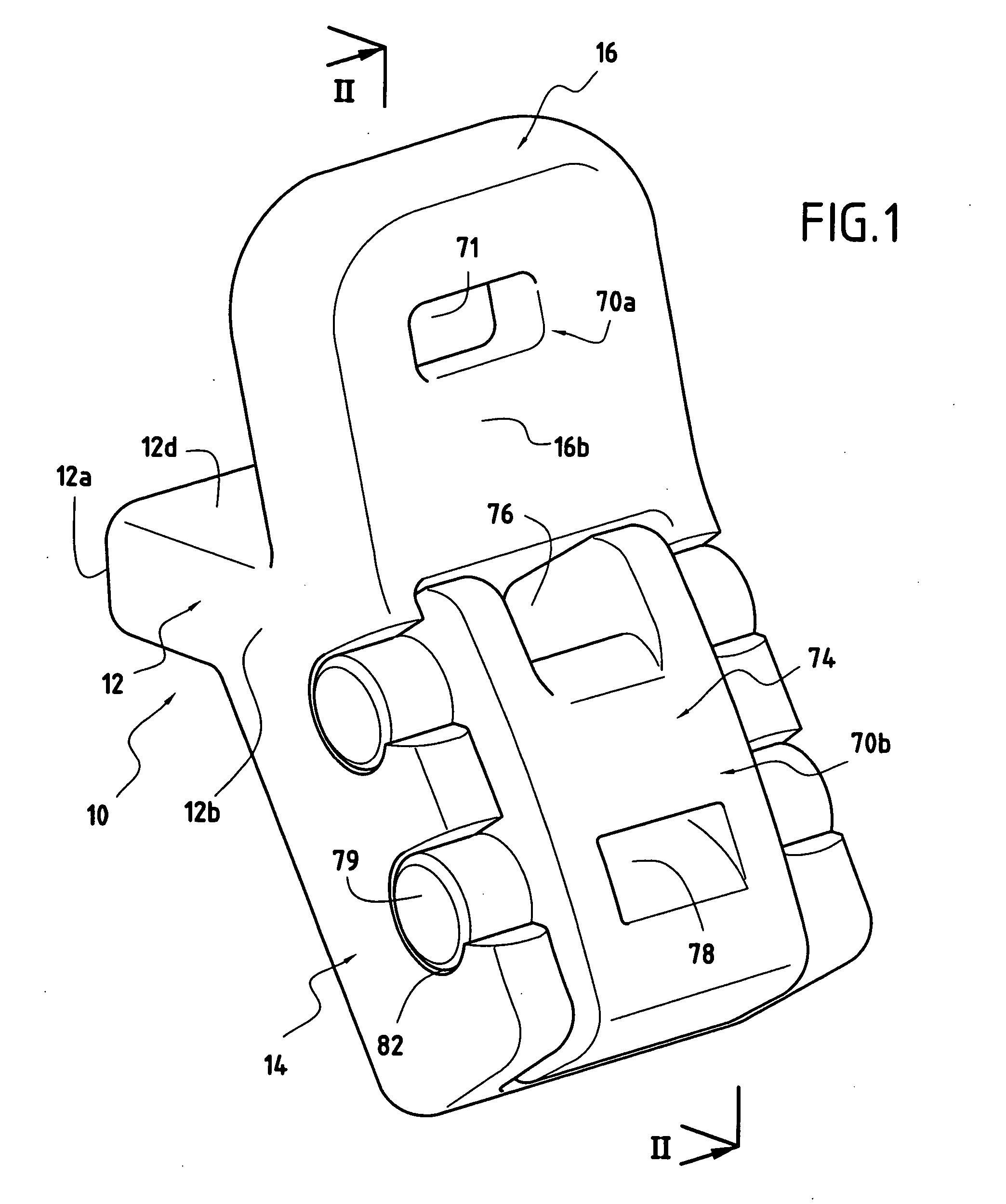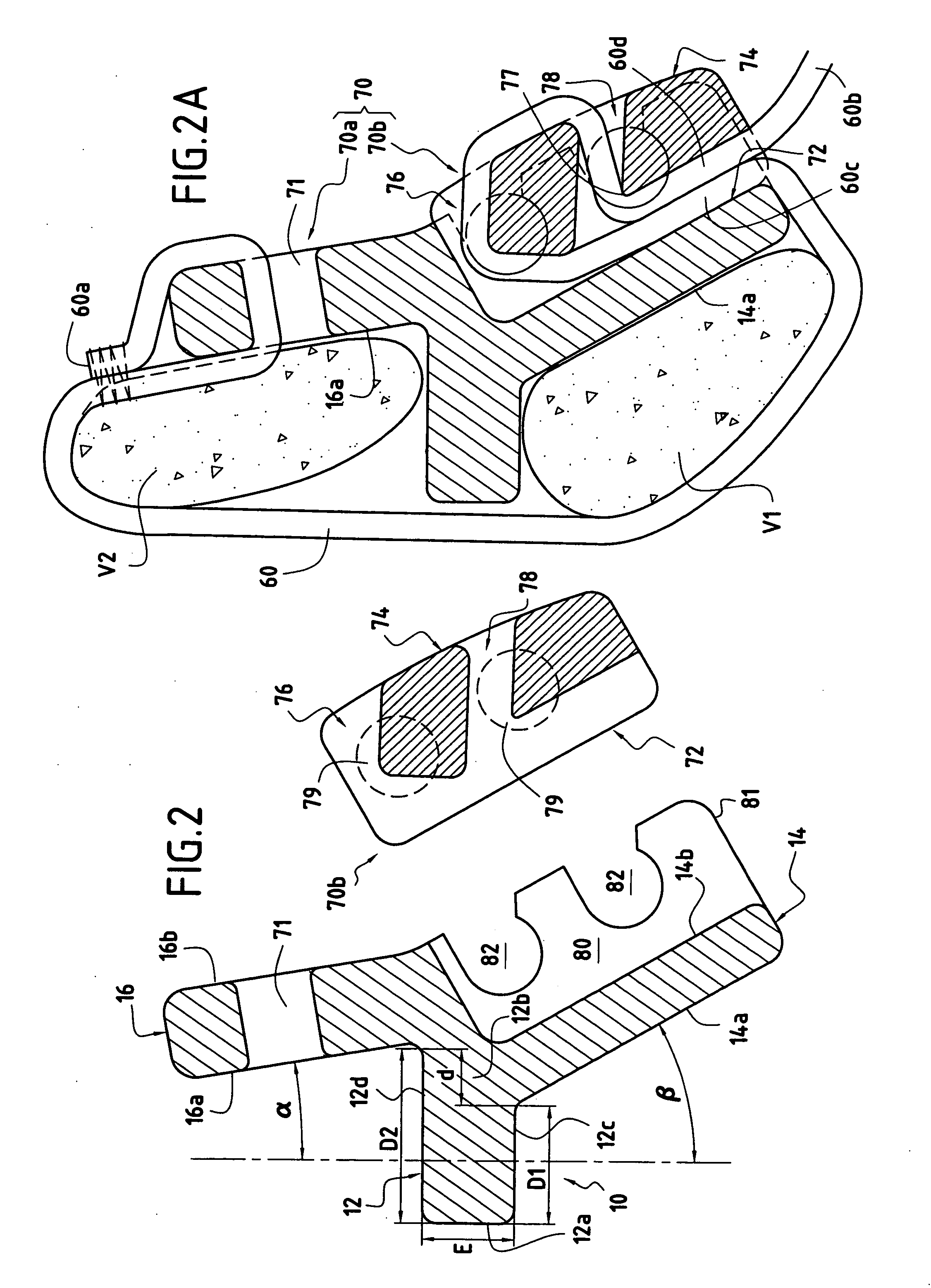Intervertebral Spacer for Cervical Vertebrae
a technology for cervical vertebrae and spacers, applied in the field of intervertebral spacers, can solve the problems of inability to use cervical vertebrae, inability to install spacers between, and damage to the intervertebral disk, and achieve the effect of limiting the relative displacement of said vertebra
- Summary
- Abstract
- Description
- Claims
- Application Information
AI Technical Summary
Benefits of technology
Problems solved by technology
Method used
Image
Examples
first embodiment
[0032] In the invention, and with reference to FIGS. 1, 2, and 2A, the spacer comprises a spacer body 10, itself comprising a spacer part 12 having a distal first end 12a and a proximal second end 12b from which there extend above and below the part 12, a top flange 16 and a bottom flange 14. Each flange 14 and 16 presents a respective anterior face 14a, 16a facing in the same direction as the spacer part 12, and a posterior face 14b, 16b opposite from the corresponding anterior face.
[0033] The spacer body 10 is symmetrical about its midplane II-II shown in FIG. 1, which plane is parallel to the direction in which distance is measured between the distal end 12a and the proximal end 12b of the spacer part 12.
[0034] The spacer part 12 of the spacer body 10 is for insertion between two cervical vertebrae, an upper vertebra V2 and a lower vertebra V1. In the example shown, the part 12 presents opposite top and bottom faces 12d and 12c that are substantially parallel to each other. The ...
second embodiment
[0048]FIGS. 3, 3A, 4, and 5 show a spacer of the invention.
[0049] This spacer comprises a spacer body 10 substantially identical to that described above. That is why those portions of the spacer body in FIGS. 3 to 5 that are analogous to portions of the spacer body in FIGS. 1 and 2 are given the same reference numerals. The major difference between the two spacer bodies lies in the fact that in the second embodiment the posterior faces 16a and 14a of the top and bottom flanges 16 and 14 are coplanar.
[0050] In contrast, in this second embodiment, the spacer has retention means 150 for retaining the spacer body 10 in position against the vertebrae V1 and V2 that are different from the spacer means 50 described above.
[0051] The spacer means 150 comprise a strap 160 presenting two ends 160a and 160b, and self-blocking fastener means 170 enabling the two ends 160a and 160b to be secured to the spacer body 10. These self-blocking fastener means 170 extend over the posterior faces 16b an...
PUM
 Login to View More
Login to View More Abstract
Description
Claims
Application Information
 Login to View More
Login to View More - R&D
- Intellectual Property
- Life Sciences
- Materials
- Tech Scout
- Unparalleled Data Quality
- Higher Quality Content
- 60% Fewer Hallucinations
Browse by: Latest US Patents, China's latest patents, Technical Efficacy Thesaurus, Application Domain, Technology Topic, Popular Technical Reports.
© 2025 PatSnap. All rights reserved.Legal|Privacy policy|Modern Slavery Act Transparency Statement|Sitemap|About US| Contact US: help@patsnap.com



